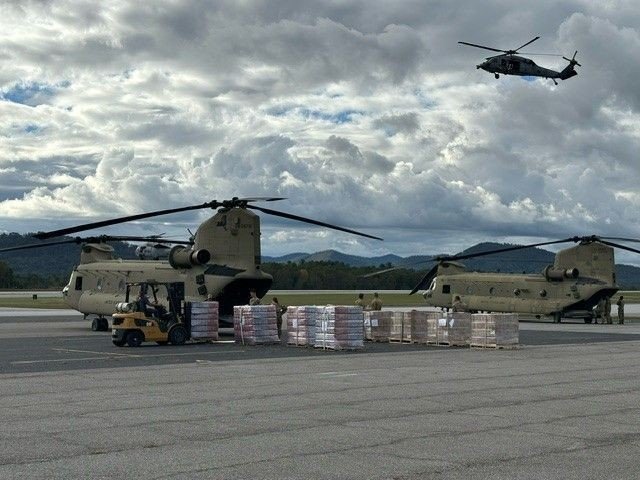The extraordinary outpouring of support for North Carolina in the wake of Hurricane Helene has been unprecedented, with airports, the military, pilots, airfield operations staff, and community organizations stepping up across the state and country.
These groups have delivered essential supplies such as food, water, medications and baby formula to some of the most affected areas. North Carolinas airports have been vital to connecting cut-off communities with these supplies through military and civilian operations.
“The impact of Helene has highlighted the critical role aviation plays in North Carolina,” said Becca Gallas, Director of NCDOT Division of Aviation. “Our airport and pilot community have shown incredible resilience, and while we have much to be proud of, it’s essential we prioritize safety and continue to uphold best practices.”

Air traffic in Western North Carolina has seen an unprecedented increase since the Helene response began. The N.C. Department of Transportation’s Division of Aviation has been working with the FAA, the North Carolina National Guard, and private aviation groups to help manage the aerial response and keep the public safe.
Several strategies they’re using include prior permission request lines where pilots call ahead to schedule landing and unloading times and aircraft parking. This ensures aircraft are spaced out so there is sufficient ramp space, and adequate fuel available. The NC National Guard, in coordination with aviation partners, has also put in established Standard-use Army Aircraft Flight Routes, designated corridors in the sky to separate civilian and military aircraft, facilitating smoother operations.
More information on safety strategies and pilot information can be found on the Helene: Pilots & Aviation Partners Coordination page, here: https://connect.ncdot.gov/municipalities/State-Airport-Aid/Pages/Helene.aspx
NCDOT’s Division of Aviation has also been monitoring general aviation airports for staffing needs and fuel levels, ensuring that resources are in place to keep operations running smoothly. The division has facilitated the transfer of a number of airport managers and qualified line technicians from airports in lesser impacted areas to relieve staff at impacted airports.
Also, the division is also operating and helping coordinate aerial missions to capture imagery, assess infrastructure, and assist with disaster relief efforts. As of Oct. 7, officials with NCDOT’s Unmanned Aircraft Systems and Photogrammetry units, the Civil Air Patrol and the National Oceanic and Atmospheric Administration have flown over 220 missions to capture images that can be used to inform the massive disaster response effort. This real-time data is helping NCDOT teams prioritize safe response and recovery operations across a range of highway corridors, including Interstates 40 and 26 and smaller roads connecting rural communities.
“Recovery from Helene will take a long time”, said Gallas. “North Carolina airports and the NCDOT Division of Aviation have weathered the early storm response with grit and resiliency and stand ready to support Western North Carolina through the next phases of Helene recovery.”


